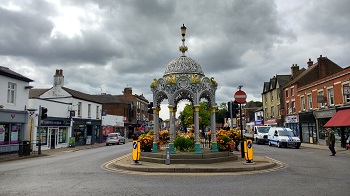Extensive Urban Survey - Cambridgeshire
Cambridgeshire County Council, 2017. https://doi.org/10.5284/1045792. How to cite using this DOI
Data copyright © Cambridgeshire County Council unless otherwise stated
This work is licensed under the ADS Terms of Use and Access.
Primary contact
Ben
Donnelly-Symes
Cambridgeshire County Council
Resource identifiers
- ADS Collection: 2880
- DOI:https://doi.org/10.5284/1045792
- How to cite using this DOI
Introduction

The Cambridgeshire Extensive Urban Survey project was an archaeological and historical assessment of 28 of the largest and most historic towns in the county of Cambridgeshire. The project was part of a nation-wide reassessment of the management of the urban archaeological resource, funded by English Heritage. The original EUS project was carried out between 1999 and 2003, and involved work by Quinton Carroll, Bob Hatton and Rebecca Casa-Hatton, all of Cambridgeshire County Council. It was refreshed and completed by Steven Morgan of Oxford Archaeology (East) in 2014.
A number of sources were used to compile the reports, including the Cambridgeshire Historic Environment Record, the Database of Listed Buildings held by the County planning department, and various cartographic and documentary records. The reports represent findings of the assessment and characterisation stage of the process. In addition to the written reports, a computer-based digital mapping and database was used using GIS and forms an important element of the project outputs.
The study area of each report focuses geographically on the historic core of the village or town and chronologically from the Palaeolithic through to c.1900 AD. The definition of the historic core is based on the extent of the settlement at the time of the 1st Edition Ordnance Survey map (1885).






